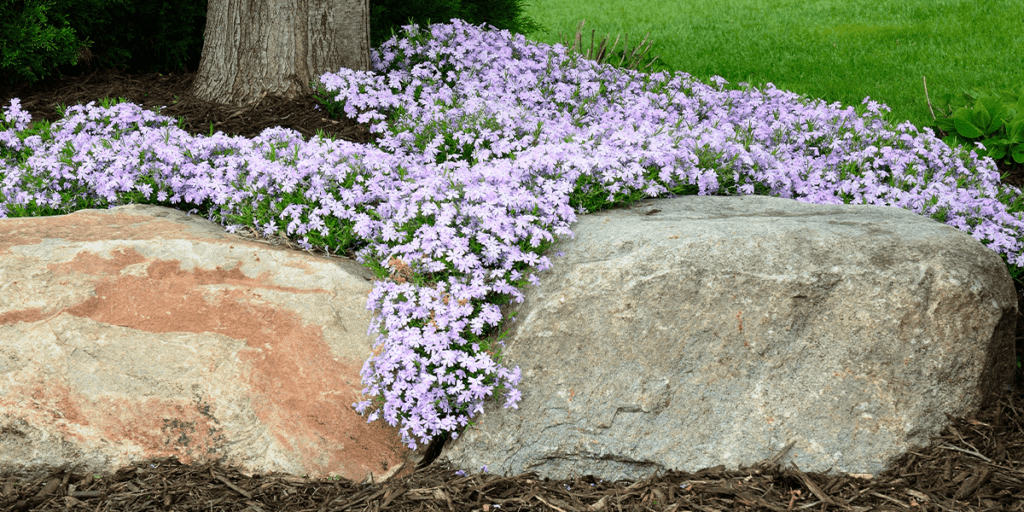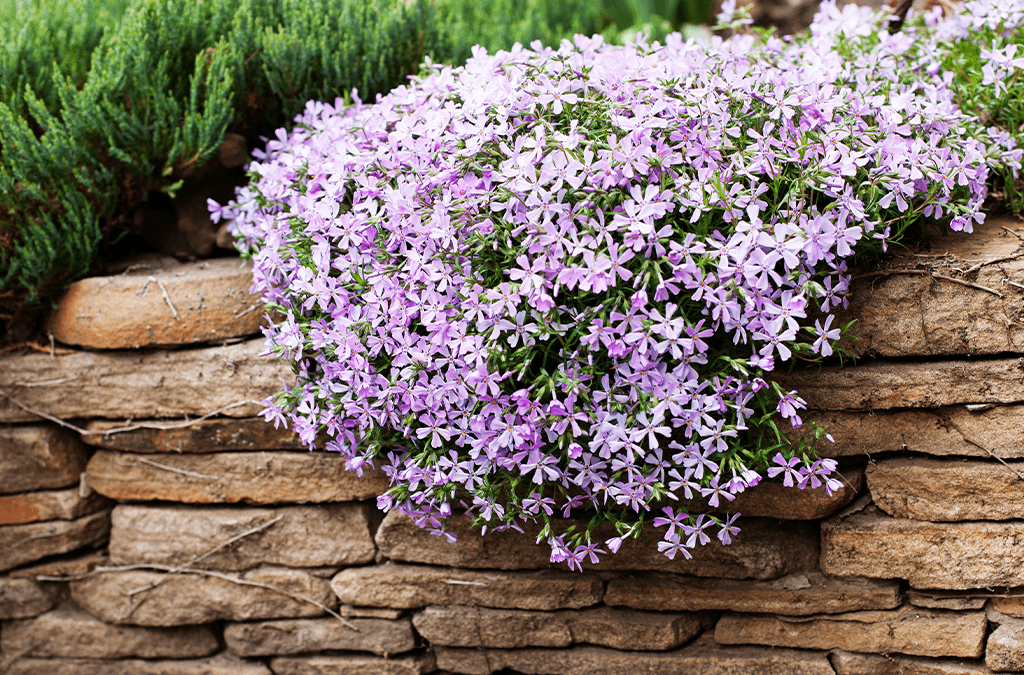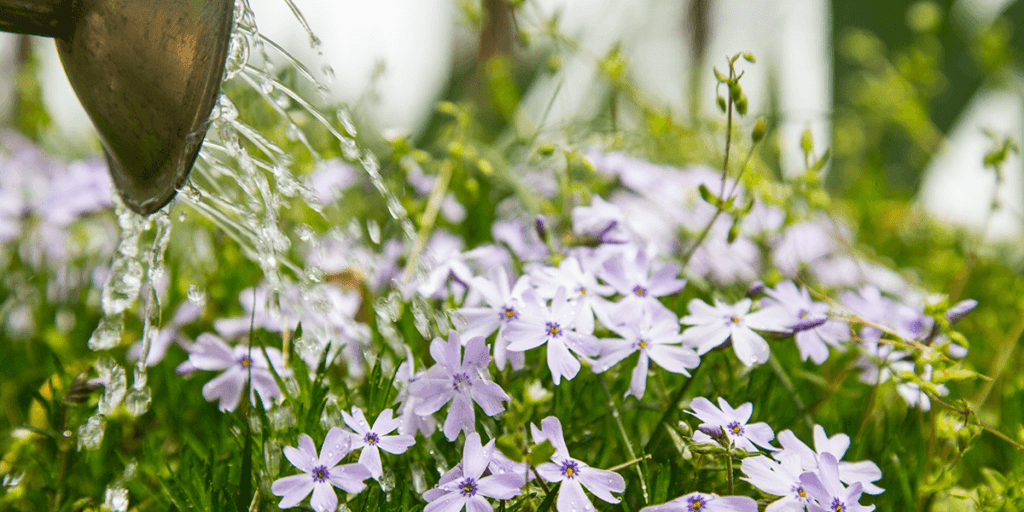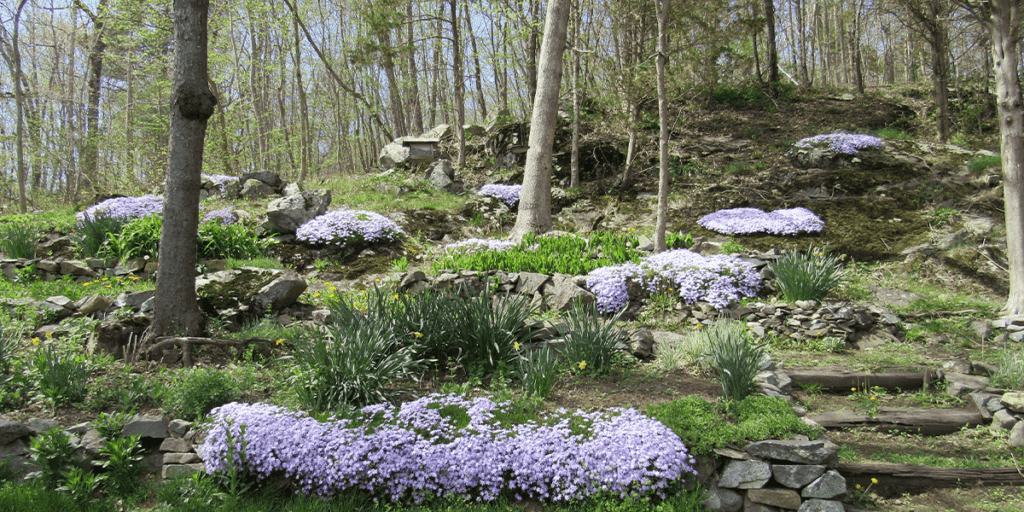If you’re looking for a hardy perennial with stunning color and a spreading growth pattern, look no further! Creeping phlox is a favorite in many gardens because of its versatility and low maintenance. It has gorgeous blooms that last most of the season and comes in beautiful colors. What’s not to love?
Types of Phlox
Who doesn’t love a great combination of low-maintenance and high-performance? Phlox is a popular perennial plant with blooms that carry on long past other perennials. There are well over 60 species of phlox with different growth patterns and purposes. Phlox range from groundcover to medium-height to tall varies, reaching up to five feet tall! We will focus on the groundcover variety called creeping phlox since it is so versatile in landscape design.
 Creeping Phlox
Creeping Phlox
Creeping phlox is a low-growing, semi-evergreen species that spreads slowly, only reaching up to six inches thick. It has beautiful needle-shaped leaves and fills with flowers at the peak of its season—you’ll see more flowers than leaves on this beauty! The flowers are five-petalled and are almost an inch across. Creeping phlox usually has blooms in white, pink, purple, and lilac-blue shades, perfect for adding summer color to your landscape.
Similar varieties of creeping phlox have different care requirements; be sure to double-check your plant for specific care instructions. For example, woodland phlox prefers partial to full shade, while moss phlox grows best in full to partial sun.
 Caring for Your Creeping Phlox
Caring for Your Creeping Phlox
As a low-maintenance perennial, creeping phlox does not need much care to thrive in your garden year after year. We recommend planting in the spring after the frost date has passed and feeding your phlox annually for healthy growth. Pruning is optional if you want to sculpt how it grows, but not necessary. You don’t need to deadhead your creeping phlox after the blooms are spent, but you absolutely can if you want to tidy up the plant for appearances.
You will definitely want to stay on top of weeds before your phlox fills out so that it’s easier to manage. If the weeds get out of hand, you can carefully dig up the plant, clear out the weeds, and replant it in the same spot. Just be mindful of the roots!
Creeping phlox prefers to grow in full sun or partial shade in slightly acidic and well-draining soil. If you haven’t had rainfall in a while, your phlox will need a drink of water, but as long as it gets watered once a week, it will be happy. Remember that established plants have greater tolerance than new ones, so give your new creeping phlox a little extra attention for the first two years.
 How to Use Creeping Phlox in Your Landscape
How to Use Creeping Phlox in Your Landscape
Creeping phlox is great for groundcover, but that doesn’t mean it has to stay at the lowest level of your garden! Consider the following creative ideas to incorporate it into other areas of your landscape:
- Plant creeping phlox at the top of rock walls or retaining walls so that it creeps down the sides, creating a waterfall of blooms. It will add some aesthetic appeal and color to your hardscaping.
- Fill any empty spots in your garden beds with creeping phlox for a full, lush aesthetic.
- If you have a sloped garden bed, creeping phlox is a great option to fill it in without adding additional height to the slope.
- Plant it at the edge of raised beds so that it spills over, softening the hard lines of your garden beds.
- Cover any hardscaping that you can’t replace this year with creeping phlox to hide the materials and create a satisfying visual for your summer enjoyment! Of course, if you need any help with hardscaping and landscape design, you can always contact us at Platt Hill Landscaping Services.
- Use it to fill in the crevices of stone walls for a naturally overgrown look.
Visit Platt Hill Nursery to find creeping phlox for sale today! We’d love to help you select the perfect variety for your landscape.
Platt Hill Nursery is Chicago’s premier garden center and nursery.


 Caring for Your Creeping Phlox
Caring for Your Creeping Phlox How to Use Creeping Phlox in Your Landscape
How to Use Creeping Phlox in Your Landscape